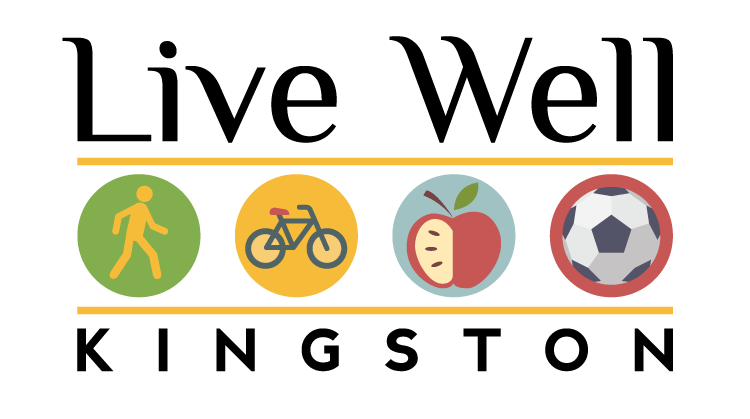Crossing the Midline: What Is It and Why Is It So Important?
By: Tracy Snyder, Program Manager for Physical Activity in Early Care and Education, Family of Woodstock
As a Program Manager for Nutrition and Physical Activity in Early Care and Education (ECE) at Family of Woodstock, crossing the midline is something I always look for. A child will not be able to do the simplest of tasks if not given the opportunity to cross the midline on a daily basis.
So let us talk more about what the midline is, and how to support children doing so in their development.
The Midline. What Is It Exactly?
The midline is an imaginary line drawn from the head to the feet that separates the left and right halves of the body. Crossing this midline means that a body part (i.e., hand or foot) is able to spontaneously move over to the other side of the body.
The brain is divided into two sides, called the left and right hemispheres. There is a mass of tissue between the two, called the corpus callosum. It contains nerve fibers that allow the two hemispheres to communicate with each other in order to coordinate learning and movement. A lack of midline crossing may indicate that the left and right sides of the brain are not communicating well across the corpus callosum.
The Midline and Child Development
Typically, children begin crossing the midline when they start reaching for toys at age 4-6 months. This skill continues to develop throughout childhood and is usually mastered at around age 8 or 9.
Bilateral movements (when both limbs are used in unison to contract the muscles, which creates force, and subsequently moves a given load) and interaction with the environment (such as caretakers playing with the child; objects being available to grasp) are important factors in trunk rotation. If a child avoids trunk rotation and/or moves the trunk stiffly as a unit, this may affect the child’s ability to freely cross the midline.
Some children may struggle to easily cross the midline. When a child shows trepidation in reaching, stepping, or looking across their center, this is known as midline crossing inhibition. This delay can be seen when a child hesitates or is clumsy when doing gross motor activities which require the arm or leg to cross over. A child who is grappling with crossing the midline will also struggle to get dressed, write, or cut with scissors.
If children have difficulty crossing the midline you may notice that they:
- Have delays in crawling
- Switch hands when working on fine motor skills such as writing or cutting
- Rotate or turn their entire body to retrieve objects on the other side of them
- Skip or do jumping jacks in an uncoordinated manner
How Crossing the Midline is Important To Growth
Reading and writing requires you to be able to smoothly and without effort cross the midline, as does completing math worksheets and navigating the recess field. Related to being unable to easily cross the midline, children who struggle with ADHD often do not have a dominant hand, something called mixed dominance. This can also cause problems with coordination, reading, math, and attention. Another sign for possible midline crossing challenges and ADHD, studies have also shown that children diagnosed with ADHD tend to prefer sports such as soccer, track and field, and football as crossing the midline is not required for these activities.
In addition, hand dominance and bilateral integration skills are also needed to cut and to dress oneself. Cognition develops because both sides of the brain are engaged and must work together during learning tasks, (left to right visual scanning across pages in a book, moving a toy to a basket, and noticing details on a page in their classwork). It also benefits social-emotional development so children build self esteem while participating in activities (sports, school activities, gym class games). Frustration and anxiety are reduced at school when children are able to participate in these activities.
Parents who notice that their children are experiencing developmental delays and show signs of mixed dominance should be on the lookout for early symptoms of other challenges. By correctly identifying these complications, parents can quickly get the resources they need to support their child’s development.
So how do you encourage an infant or toddler to cross the midline?
- Clap hands at midline
- Move a toy across the baby’s line of vision so they have to track the object.
- Tummy time is so important! Place toys in front of baby to encourage reaching.
- Gently take baby’s arms and hug them across their chest.
- You can have toddlers lie on their back and reach for their opposite foot.
- Give them a toy in one hand and encourage them to grab it with the other.
- To work on midline crossing skills with preschool and older children, try throwing, catching, and kicking objects.
- Blow bubbles and pop them! Dance!
- Yoga is an excellent way to get your kids crossing over.
Interested in Learning More?
Creating Healthy Schools and Communities (CHSC), is a program of the City of Kingston’s Department of Health and Wellness that supports policy, system, and environmental changes to make it easier for everyone in Kingston to make healthy choices. The goals of CHSC are to improve food and nutrition guidelines in food service venues, support the planning to increase safe and accessible physical activity, and improve policies and practices to support physical activity and improved nutrition in schools and early care and education centers.
If you are an Early Care and Education Center provider that would like to learn more about this fantastic program, contact:
Tracy Snyder, Program Manager for Nutrition and Physical Activity in ECE
tsnyder@familyofwoodstockinc.org
(845) 331-7080 ext. 157




